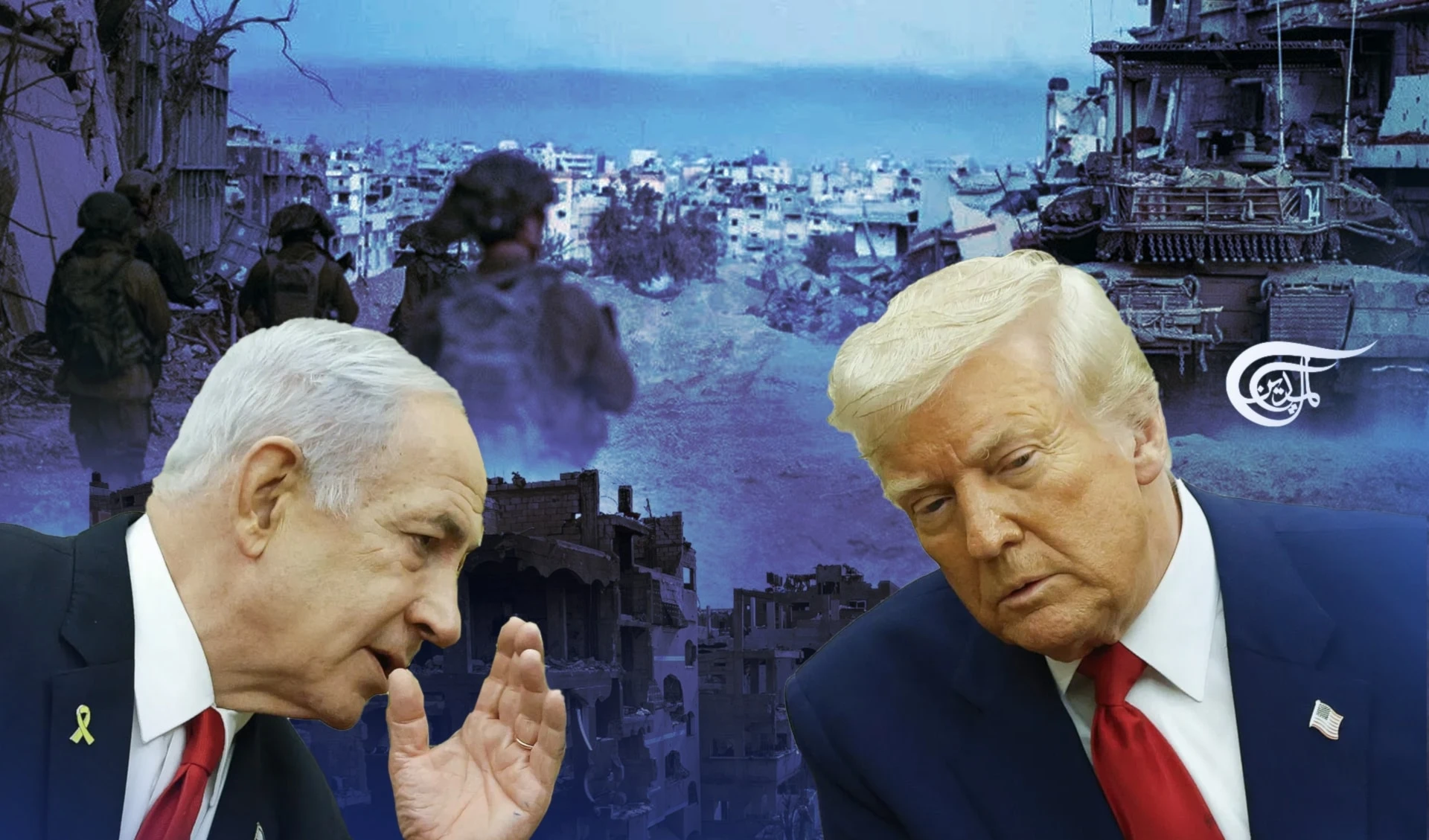The BRICS is soaring high, as the G7 fades into the twilight
The IMF estimates that the BRICS countries will collectively have a GDP of $56 trillion, while the G7 nations are projected to have a GDP of $52 trillion.
-

BRICS vs. G7 (Illustrated by: Mahdi Rtail, Al Mayadeen English)
In just about 13 years, the BRICS nations have outperformed the Group of Seven (G7), a rival alliance established half a century ago, by accounting for approximately one-third of the worldwide economy. Projections indicate that during the next five years, the BRICS bloc's share of global GDP will further increase to 33.3%, while the G7's stake is expected to diminish to 27.8% in the world economy.
Data collected by Visual Capitalist, one of the leading researchers on international markets, technology, energy, and the global economy, reveal that historically, the G7 countries have contributed approximately 40% of the global GDP due to their status as industrialized nations, benefiting from the post-war productivity boom.
In 2009, however, the leaders of four fast-growing economies, notably Brazil, Russia, India, and China, assembled to establish their own iteration of the global economic order. In 2010, South Africa became a member of the BRICS organization as well. This development presented a significant challenge to the existing liberal international order. Given that BRICS currently represents 40% of the global population and a quarter of the world's GDP, the inclusion of additional members would enhance the bloc's strength and influence, further promoting the concept of multipolarity.
BRICS growing
The BRICS share of the global GDP, which was 16.45% in 1992, has increased to 31.67 in 2022, while the G7 share, projected to be 45.80% in 1992, has decreased to 30.31%. The economies of India and China contributed to the improvement of the BRICS as a whole.
Following a period characterized by swift industrialization during the 1980s and 1990s, China saw a notable enhancement in its export activities after it acceded to the World Trade Organization in 2001. This factor contributed to China's rise as the second-largest global economy by the year 2010.
India's economic growth has not matched the rapid pace of China's, although, by the year 2022, it would have attained the third position in terms of gross domestic product (GDP), amounting to $12 trillion. Collectively, these two nations constitute around 25% of the global GDP, which is valued at $164 trillion when adjusted for purchasing power parity (PPP).
According to the International Monetary Fund's (IMF) projections for the year 2028, the BRICS nations will account for approximately one-third of the world's economic output, which comes to 33.3%. In contrast, the G7 nations are anticipated to contribute 27.8% to the global economy.
Membership expanded
In a major development, South African President Cyril Ramaphosa declared at the BRICS summit in Johannesburg on Thursday that the BRICS bigwigs have decided to extend the membership of the organization to Argentina, Egypt, Iran, Ethiopia, the UAE, and Saudi Arabia. With the addition of six more members, the strength of the BRICS increased to 11.
"We have made up our minds to roll out the red carpet for the Argentine Republic, the Arab Republic of Egypt, the Federal Democratic Republic of Ethiopia, the Islamic Republic of Iran, the Kingdom of Saudi Arabia, and the United Arab Emirates to join the BRICS bloc as full-fledged members," Ramaphosa declared at the BRICS summit in South Africa, saying that the membership will kick in on January 1, 2024. With the addition of six more members, the BRICS+ countries now control 80% of the world's oil reserves.
The MENA's powerful economies joining the BRICS+ point to a major shift in the policies of oil-rich Gulf nations. It's worth mentioning that Joe Biden's administration has shown a different tune when it comes to dealing with Saudi Arabia. The US President decided it was high time to take a closer look at the Saudi-American relationship after the kingdom and OPEC+ joined forces to trim oil production in October 2022. As a result, gas prices shot up in Europe.
Biden really gave Crown Prince Mohammed bin Salman a piece of his mind about human rights issues, and it definitely rubbed the Saudis the wrong way. As a result, Saudi Arabia, the UAE, Bahrain, and Egypt are all attempting to seize the initiative while it is still favorable in the power vacuum brought about by the Russia-Ukraine conflict. They aim to go against the grain and spread their wings on the ever-evolving global stage.
The Johannesburg Declaration put all the rumors to rest about Brazil and India's reservations about the BRICS expansion. The BRICS leadership ended up strongly backing expansion and unanimously approving the credentials of six additional countries for membership. The attempt on the part of the US and Western groups to sow the seeds of discontent in the multipolar world was aborted.
BRICS vs. G7
Initially formed with the primary objective of capitalizing on investment prospects, BRICS has evolved over the past decade to emerge as a formidable economic competitor to the G7. A number of their endeavors encompass the establishment of an alternative international financial institution, with ongoing discussions regarding the implementation of a payment mechanism and the introduction of a novel reserve currency.
Despite the increasing economic significance of the BRICS nations, it is noteworthy that the combined gross domestic product (GDP) of the G7 countries remains substantial, amounting to an astonishing $46 trillion, in contrast to the total GDP of the BRICS nations, which stands at 27.7 trillion. Based on the IMF's calculations, it is anticipated that by the end of 2023, the economies of the BRICS countries will surpass those of the G7 nations in terms of their contribution to the global economy. This is determined by comparing the purchasing power parity (PPP)-adjusted GDPs of the two groups.
The IMF estimates that the BRICS countries will collectively have a GDP of $56 trillion, while the G7 nations are projected to have a GDP of $52 trillion. The US exhibited a higher numerical count in comparison to the other G7 member countries in terms of their respective GDP values. The US boasted a GDP of $26.9 trillion, while Japan followed with $4.4 trillion, Germany with $4.3 trillion, and the United Kingdom with $3.2 trillion. In contrast, China emerged as the leading country with a total GDP of $19.4 trillion, while India followed with $3.7 trillion. Brazil and Russia both had GDPs of $2.1 trillion.
Geopolitical implications
The economic ascent of the BRICS nations has significant geopolitical ramifications. In addition to divergent political ideologies, the growing influence of the BRICS confers significant financial leverage upon its constituent nations. The significance of this matter became evident following the 2022 Russian special military operation in Ukraine, as both China and India refrained from denouncing the conflict during the United Nations proceedings and continued to buy Russian petroleum.
The current situation is a matter of concern for the G7 nations, as this group of advanced economies continues to possess unrivaled influence on the global stage. The G7 continues to exert substantial financial and political influence, ranging from the implementation of coordinated sanctions on Russia, Iran, and a host of others in Latin America and Africa to the provision of military assistance to Ukraine.
Over the coming decades, the global landscape is anticipated to become increasingly intricate and multifaceted, mostly due to the projected leadership of China and India in global economic growth. However, it is important to acknowledge that these countries will also face internal demographic challenges during this period. Consequently, the competition for power among these international blocs will contribute to the evolving complexity of the world order.

 F.M. Shakil
F.M. Shakil
 7 Min Read
7 Min Read











